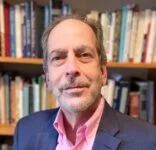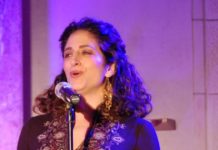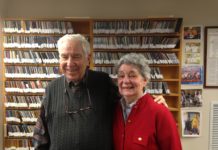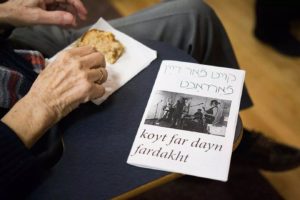
In the mid-20th century in South Philadelphia, gaggles of Jewish children, many of whom were children of Holocaust survivors or refugees, flocked to Sunday schools around the city where they’d learn Yiddish, a language they’d hold onto for their entire lives.
“It was a time of a renaissance of interest for that generation of children of immigrants,” said Rakhmiel Peltz, a sociolinguistics professor at Drexel University. “To them, the essence of their being Jewish was expressed in that language that they had grown up with in the home.”
Peltz authored “From Immigrant to Ethnic Culture: American Yiddish in South Philadelphia,” an ethnography of children of immigrants conducted in the 1980s. He found, overwhelmingly, that these Yiddish-speakers were preserving their language to preserve their Ashkenazi Jewish roots.
“What kept Judaism going was not the shared religion,” Peltz said. “It was, on one hand, the sharing of religion, but secondly, the adaptation to local life: through the family and through the neighborhood.”
Today, nearly 40 years after Peltz conducted his ethnography, young Yiddish-speakers are still trying to hold onto the language and Ashkenazi culture at its foundation, either learning the language in adulthood or preserving it through klezmer music. While interest in the language has remained steady, Peltz said, a community for Yiddishists is severely lacking.
Sunday schools for learning Yiddish no longer exist, and the Philadelphia Sholom Aleichem House, a space for secular Jews to discuss Jewish culture — including Yiddish — disbanded after 50 years of operation in 2014.
For the next generation of Yiddish-learners, finding fellow speakers to practice with is challenging. It’s a problem West Philadelphia resident Estelle Lysell has had for several months since she completed a Yiddish intensive course with the Workers Circle.
“My friends were interested in Yiddish; I have friends who learned some Yiddish, but I don’t have anyone who was actually speaking,” she said. “And when you’re learning a language in a vacuum for your own sake, that’s demoralizing.”
Lysell began learning Yiddish in January 2021, when she bought a textbook for herself with which to study. But she wasn’t a fan of many of the resources available.
Duolingo, which launched its Yiddish course in April 2021, helps in teaching phrases and bolstering prior knowledge of a language, but isn’t a worthwhile tool for someone starting at square one, she said. Textbooks and online courses are expensive for 20-somethings.
“For other languages, the revival projects are teaching children and elementary schools for free how to speak the language,” Lysell said. “With Yiddish, it’s just college students paying for it themselves.”
But just as Lysell is looking for communities with which to learn the language, pre-existing Yiddish institutions are having trouble attracting a younger crowd.
More than 20 years ago, Haverford College professors Seth Brody, Dan Gillis and Mel Santer — all of whom have died — founded the Yiddish Culture Festival, a convening of Yiddish-speakers for programming, such as poetry readings, film screenings and klezmer performances. The festival’s attendance has held steady at 20-30 attendees, many of whom are older community members.
“There were very few students on Haverford’s campus who, in fact, were enticed by this,” said Jeffrey Tocosky-Feldman, a Haverford mathematics professor and organizer of the Yiddish Culture Festival.
Two decades after the group’s founding, the demographics haven’t changed, he said. Recently, a few younger community members have attended programs, but no more students. Because the festival is organized by professors, organizers don’t have as much time to invest in publicizing events or drawing in newcomers, something Tocosky-Feldman wants to do.
“Pretty much every year, I go on the Haverford website, and I look up the Jewish student organizations and try and contact whoever’s the head of them,” he said. “And many times, the person listed there has graduated.”
Susan Hoffman Watts, a fourth-generation klezmer musician, has had similar problems attracting an audience to the Community Klezmer Initiative, particularly after COVID.
In December 2019, after years of trying to organize events with a critical mass audience, Watts finally had success with a “Yiddish Cocktails” event, packing 80 people into the Philadelphia Folksong Society building on Ridge Avenue.
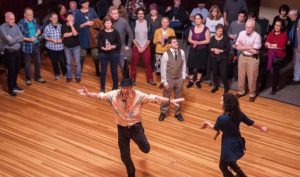
“Was [the Yiddish] terrible and awful and not great? I mean, it was; it was crazy,” Watts said. “But people heard Yiddish.”
After COVID, however, the Community Klezmer Initiative has mostly laid dormant. Watts is hoping to resurrect programming there but is having trouble gaining momentum again. It’s a particular shame, she said, because of the welcoming environment of klezmer spaces.
“One of the things about the klezmer scene is that it’s very open-arms, accepting and loving … and no matter what … you are welcomed with open arms, loved and respected,” Watts said. “I think that people really respond to that openness.”
As Yiddish institutions work to get the word out to interested parties, individuals are dreaming up their own spaces to practice the language in community with others.
Lysell is inspired by a community garden she volunteers at, where many of the other volunteers speak Spanish. By immersing herself in an environment where the language was spoken, she’s begun to pick it up herself.
She believes the same could be done with Yiddish, inviting a group to garden or to make Shabbat dinner together, to “limp through sentences” of English and Yiddish, “slowly growing our vocabulary.”
“It’d be really cool to see something like that — active community organizing,” Lysell said.
[email protected]; 215-832-0741



